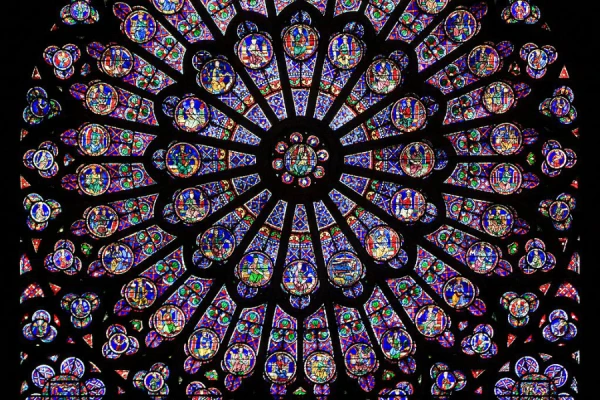
Paris, France, Apr 15, 2019 / 02:57 pm (CNA).- Catholics around the world watched with horror as the roof of Cathedrale Notre-Dame was engulfed with flames on Monday afternoon. The blaze began shortly after the church closed for visitors, and everyone was evacuated safely, though the entirety of the roof collapsed into the church.
#BREAKING Notre-Dame’s main structure is “saved and preserved” after fire, says Paris fire official pic.twitter.com/IC8fT7s593
— AFP news agency (@AFP) April 15, 2019
Here are five things you may not know about the church that has often been called the “Queen of Cathedrals.”
1. Building was an 182-year process
Rome was not built in a day, and neither was Notre-Dame. Construction of the cathedral began in 1160 and took nearly two centuries. While most work was done by 1260, it was finally completed in 1345.
2. It’s home to many relics
The most famous relic located in Notre-Dame is the crown of thorns believed to have been placed upon Jesus Christ during his scourging. The cathedral also contains a piece of the true cross and one of the nails used in the crucifixion, plus relics of many French saints. Initial reports suggest that the relics were saved from the blaze.
3. It’s not actually owned by the Archdiocese of Paris
Due to France’s laws regarding secularization, the French government owns all churches built before 1905, including Notre-Dame. The government lets the Archdiocese of Paris use the building for free, and will continue to do so in perpetuity. The Archdiocese of Paris is responsible for the upkeep of the church, as well as for paying employees.
4. It is the most-visited site in Europe
With 12 to 13 million visitors annually, Cathedrale Notre-Dame has more visitors than anywhere else in Europe.
5. It has been destroyed before
While Monday’s fire was certainly the most extensive damage ever done to Notre-Dame, this is hardly the first time she has undergone structural trauma. In WWII, nearly all of the glass was broken when Paris was bombed, and Huguenots destroyed icons and statues during the sixteenth century.
During the French Revolution, Notre-Dame was ransacked and re-dedicated to the “Goddess Reason.” The building itself was used at that time for wine storage. The Church resumed use of the building in 1801.
If you value the news and views Catholic World Report provides, please consider donating to support our efforts. Your contribution will help us continue to make CWR available to all readers worldwide for free, without a subscription. Thank you for your generosity!
Click here for more information on donating to CWR. Click here to sign up for our newsletter.




During the liberation of Paris in August 1944, the cathedral suffered some minor damage from stray bullets. Some of the medieval glass was damaged, and was replaced by glass with modern abstract designs.
Source: https://en.wikipedia.org/wiki/Notre-Dame_de_Paris#20th_century